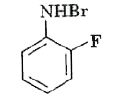The following reaction is accompanied by liberation of heat and occurs in two steps as follows
i) R−X→R++X− (slow)
ii) R++Nu−→R−Nu (fast)
The progress of the reaction is best represented by




Ea of slow reaction is higher and that of faster Activation energy (Ea) of backward reaction =Ea fo forward reaction + heat of reaction.
= X + Y.
Topper's Solved these Questions
Similar Questions
For an exothermic chemical process ocuuring in two process occuring in two steps as follows
(i)A+B→X(slow) (ii)X→AB(fast)
The progress of reaction can be best described by :
View SolutionFor an exothermic chemical process ocuuring in two process occuring in two steps as follows
(i)A+B→X(slow) (ii)X→AB(fast)
The progress of reaction can be best described by :
View Solution
Knowledge Check
The product R in the following reaction is
 A
A B
B C
C D
D
For an exothermic chemical process ocuuring in two process occuring in two steps as follows
(i)A+B→X(slow) (ii)X→AB(fast)
The progress of reaction can be best described by :A B
B C
C D
D
For an exothermic chemical process ocuuring in two process occuring in two steps as follows
(i)A+B→X(slow) (ii)X→AB(fast)
The progress of reaction can be best described by :A B
B C
C DNone of these
DNone of these
For an exothermic chemical process occurring in two as
(i) A+B→X (slow)
(ii) X→AB (fast)
The process of the reaction can be best described by
View SolutionA reaction occurs in the following steps:
NO2(g)+F2→NO2F(g)+F(g)(slow)
F(g)+NO2(g)→NO2F(Fast)
Write the rate law
View SolutionThe reaction A+2B+C→Z occurs by the following mechanism:
(i) A+2B+C→X (fast)
(ii) X+C→Y (slow) (iii) Y+B→Z (very fast)
Rate law for this reaction is:
View SolutionThe mechanism for the reaction is given below
2P+Q→S+T
P+Q→R+S (slow )
P+R→T (fast)
The rate law expression for the reaction is
View SolutionA chemical reaction A+2B⇒AB2 follows in two steps
A+B⇒ AB(slow)
AB+B⇒AB2 (fast)
Then the order of the reaction is
View Solution
